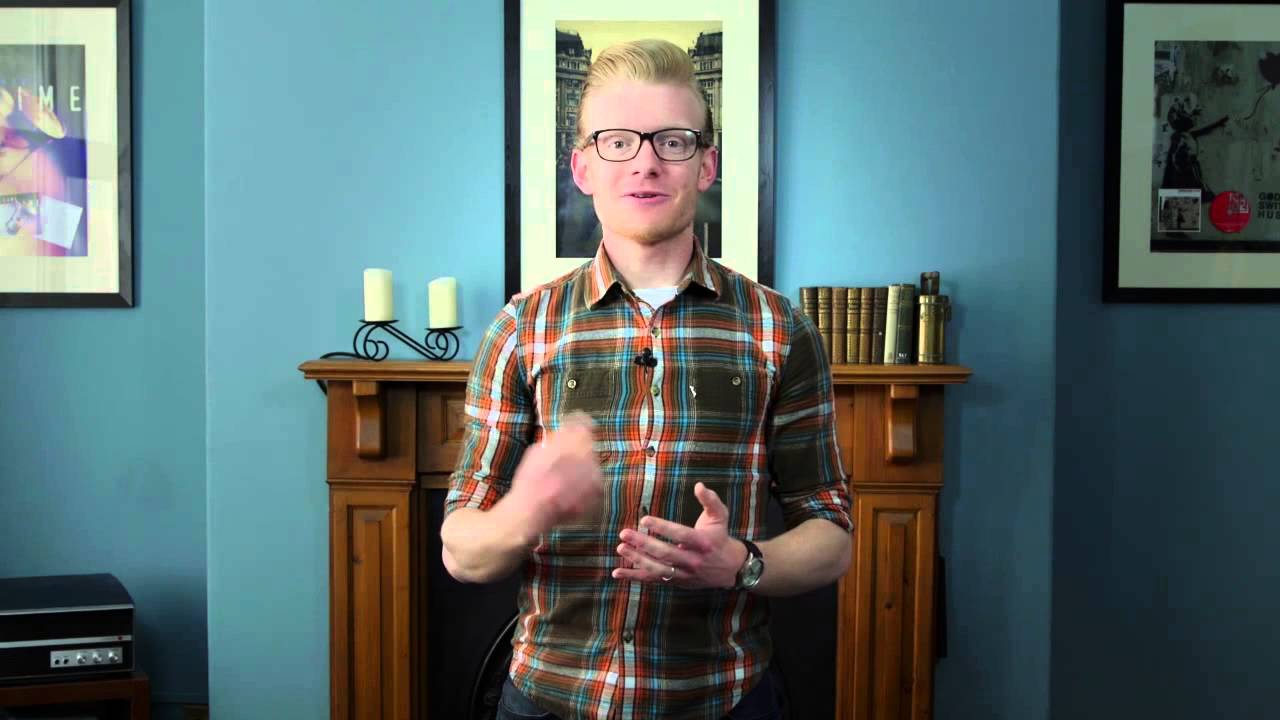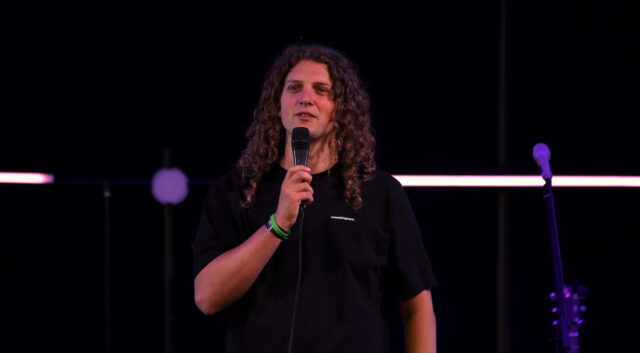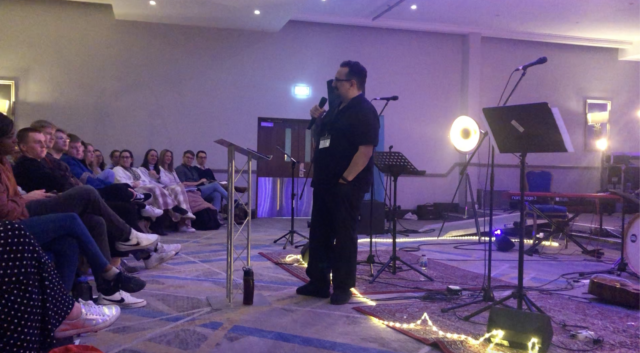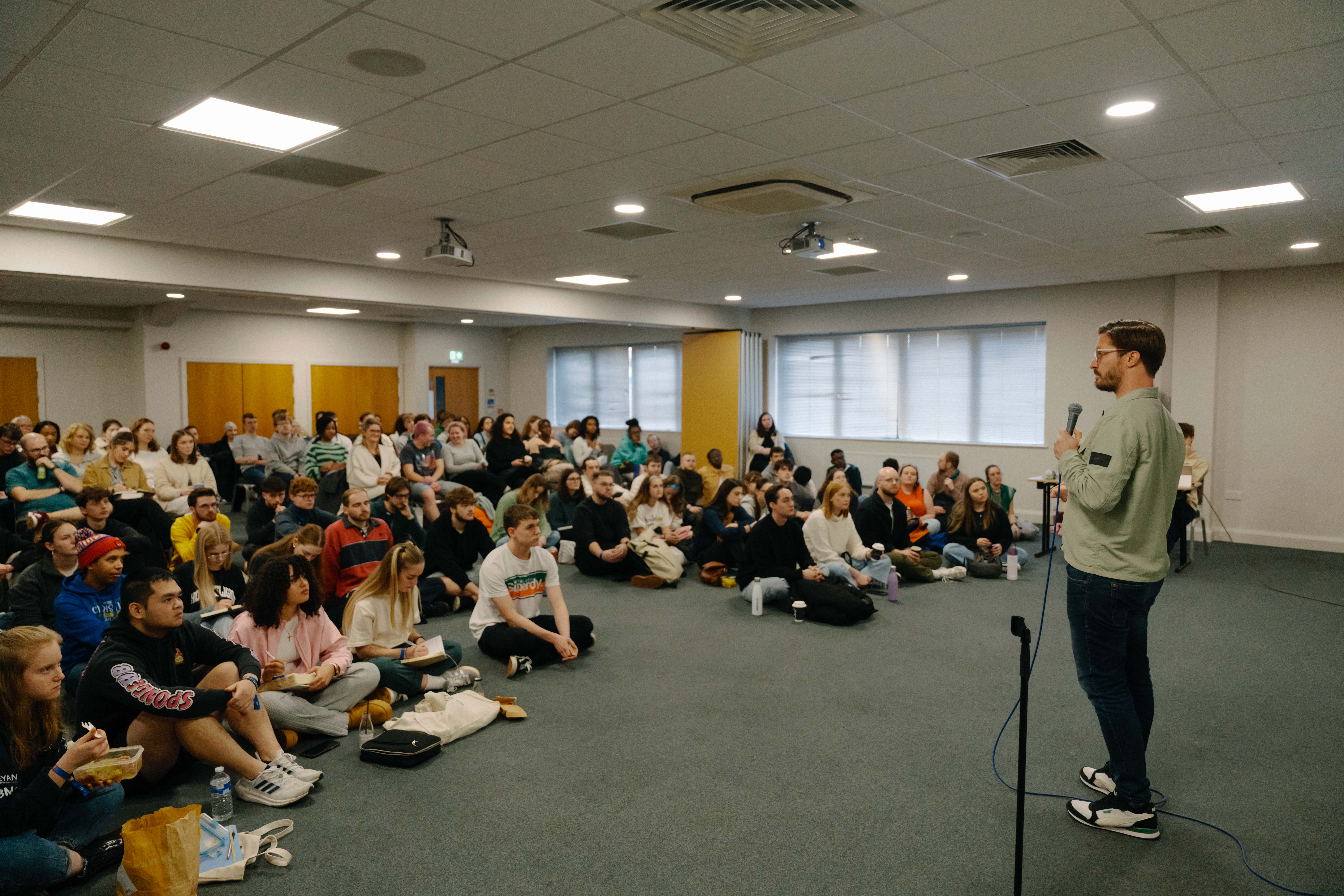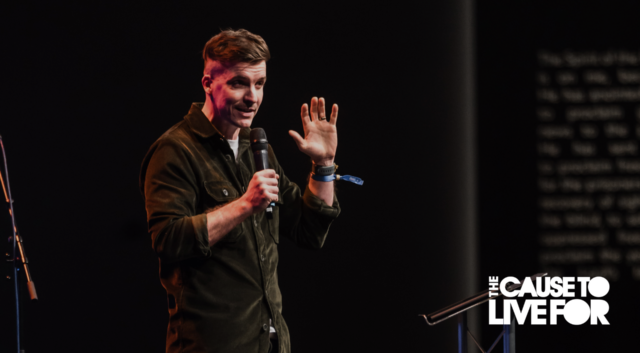In this short video Stuart Burke gives us a basic lesson in how our voice box works, to help us understand how to improve our singing.
“In order to sing correctly it’s good for us to have a basic idea of how it all works.”
Larynx
The larynx or voice box as we call it holds together all your bits and pieces like your vocal chords. So when I talk about a high larynx after extended singing what I mean is your whole bit behind this cartilage here gets tight and actually rises up a few millimetres.
Vocal Chords
Your vocal chords are two little fleshy membranes that snap together to create sound. When they are snapped gently together, a soft sound is made. When they snap together forcefully, a large sound is made. The quicker the chords open and close, the higher the resulting pitch will be. Your vocal chords open and close around 100 per second at normal speech level!
Resonators
Once the vocal chords have made the sound we then use our resonators to amplify the sound. Your mouth is an obvious resonator but within that you’ve got your soft palate at the back, then your hard palate, then your teeth and lip. You’ve also got resonators in your nose, your sinuses, in the top of your skull and in your chest. The higher notes are going resonate higher up in the face and the low notes will resonate in the chest.
Placement
When singing, you always want to be thinking about placement. You want to place the resonance of your sound mostly in your mask. The mask is all the resonators in the front of the face. You want to think about placing your voice right at the front of your mouth, by your teeth and feel the sound resonating in the nasal and sinus resonators.
Pop/Classical
This is the main difference between the classical and pop sounds. Classical singers are taught to sing with a very slack jaw using mainly their chest resonator. The pop sound on the other hand is the more forward placed sound we were talking about. It uses a lot of twang which means it utilizes the nasal, sinus and head resonators a lot more.
Singing with Confidence and Listening
So when you start singing, come in confidently, placing the voice in the mask with a slight inward smile. The smile will help with tuning.
Most of all singing is about listening. Listening to the band you’re playing with and also listening to loads of music. Just go and listen to as much music as you can, all different styles. See if you can work out how these singers are making their sound. See if you can impersonate their sound. That way you will be able to work out what is your natural sound.
A Vineyard Churches resource
Vineyard Churches UK & Ireland seeks to bless the whole body of Christ with resources from the church for the Church.
This resource was added: 15 Jul 2015 | Filed under: Worship
